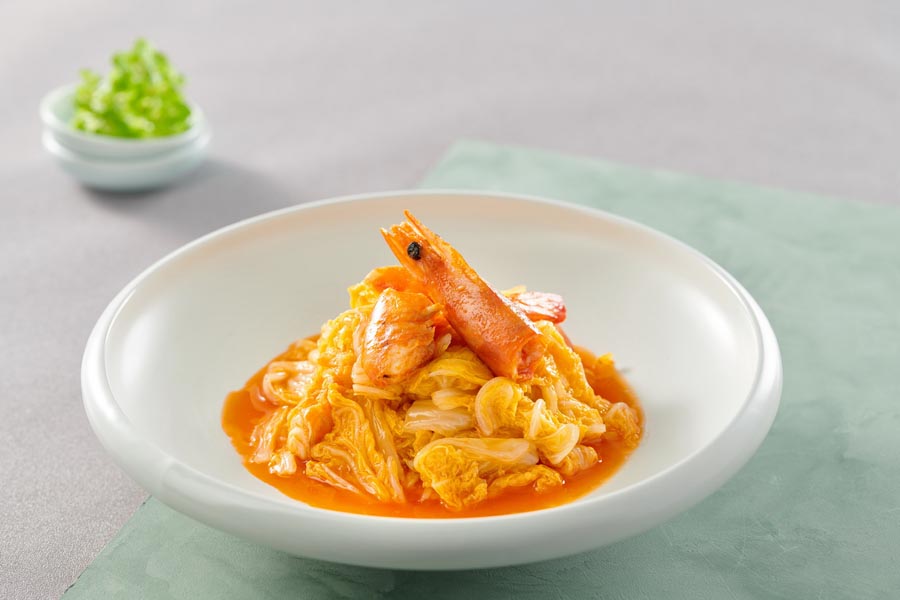 |
|
Braised prawn with cabbage. [Photo provided to China Daily] |
Salt-coated peled is inspired by a traditional fish dish found in Lu cuisine and a regional method of making bread. A type of white freshwater fish, the peled are shipped in from Sailimu Lake in the Xinjiang Uygur autonomous region, and have a tender and delicate texture and flavor like tofu.
The fish is simply coated with salt before it's baked. When it's served, the salty coating cracks open to reveal the fresh, juicy meat of the fish.
Sea cucumber is a dish that is nourishing, but one that's also difficult to cook. At Lu Style, sea cucumber soup and braised sea cucumber with leeks are both signature dishes.
All the sea cucumbers served at Lu Style are sourced from the wild and are over three years old. According to Zhang, they harvested at a depth of 20 meters and are plump with strong spines.
Only salt is added to the sea cucumber soup as seasoning, so the umami of the soup comes purely from the sea cucumber. The deep green color of the soup comes from the seaweed that sea cucumber eats, its only source of sustenance.
Donkey meat is not a common ingredient in Chinese cooking, but something of a regional delicacy in Shandong. Lu Style sources the meat from animals culled at the age of around 2 years old.
"The donkey's skin, meat and milk are all nutritious, and donkey meat is one of the main ingredients found in Lu cuisine," Zhang says.
Donkey gelatin soup with fermented black garlic is a typical winter treat. The first step in creating the sweet and salty soup is to boil the donkey meat and gelatin for 12 hours at a low heat, before the black garlic is added and then cooked for a further four hours.